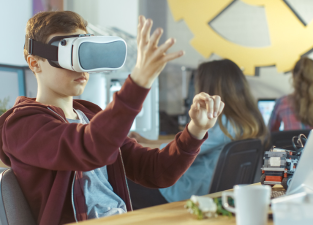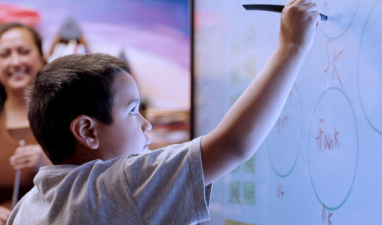In recent years, the development of science and technology in the Internet, big data, and artificial intelligence has made people increasingly feel the charm and power of science and technology. Science and technology seems to have gradually entered the field of education from the fields of production, life, and management, and its influence is getting bigger and bigger.
In recent years, the development of science and technology in the Internet, big data, and artificial intelligence has made people increasingly feel the charm and power of science and technology. Science and technology seems to have gradually entered the field of education from the fields of production, life, and management, and its influence is getting bigger and bigger.
Artificial Intelligence and Personalized Teaching
The rapid development of artificial intelligence (AI) is completely changing the face of education. From the rise of generative AI tools (such as ChatGPT) to the improvement of educators' ability to use AI to automate teaching tasks, AI technology has undoubtedly become one of the hot topics in the classroom. However, technology does not bring all opportunities. As one scholar pointed out: "If we just copy the existing teaching model more efficiently, it will only magnify its inherent problems."
The advantages of AI are not only reflected in assisting teachers to complete tasks such as grading homework and designing courses, but also provide students with intelligent learning support. For example, AI can act as a guide in the writing process to help students revise and improve their expressions. But at the same time, educators must also cultivate students' AI literacy and teach them to think critically about the limitations and biases of AI.

Immersive Environment and Virtual Reality
With the gradual maturity of virtual reality (VR), augmented reality (AR), and mixed reality (MR) technologies, immersive teaching is becoming possible. Today's technology not only allows students to visit distant historical sites by wearing helmets, but also allows them to create localized interactive 360-degree scenes with simple equipment.
As a cutting-edge application of immersive education, the holographic classroom is particularly eye-catching. Based on 5G and holographic projection technology, the smart classroom projects the teacher's three-dimensional image to the remote classroom in real time, and students can experience the 1:1 naked-eye 3D effect without wearing equipment. This breakthrough technology solves the problems of insufficient interactivity and lack of presence in traditional remote teaching, making the learning experience of remote students more intuitive and vivid.
The double-edged sword of gamification learning
Gamification of learning is another technology trend that has received attention. Through interactive videos and point rewards, gamification learning has stimulated students' interest. However, this method is not flawless. A scholar once vividly called it "broccoli wrapped in chocolate": seemingly interesting forms may be difficult to extend to real knowledge internalization.
Future gamification design should pay more attention to the diversity of reward mechanisms, such as encouraging students to try new problem-solving strategies, rather than just pursuing speed and accuracy. This approach not only increases the fun of the learning process, but also promotes students' critical thinking and creativity.

Data-driven educational decision-making
The popularity of educational technology has brought unprecedented amounts of data, from every click of students to the completion of every assignment, all details can be recorded. However, the potential of this data has not yet been fully tapped. An educator emphasized: "The value of data lies not in itself, but in how we use it to create more learning opportunities."
AI technology can help educators extract insights from massive data and support personalized teaching. However, data privacy issues cannot be ignored. In 2023, K-12 schools experienced a series of cyber attacks, which put forward higher requirements for data security. In the future, the education system needs to establish a strong infrastructure to not only protect students' data, but also ensure that data serves education.
Holographic technology and the future of education
Holographic technology is considered to be one of the key elements of future smart classrooms due to its full immersion, full data and full interactivity. With the support of 5G networks, holographic classrooms allow students to learn in an immersive environment. For example, teachers can use holographic projection to show the three-dimensional dynamic process of cell division, or let students intuitively feel the impact of climate change on the earth.
In addition, holographic technology also creates possibilities for interdisciplinary collaboration. Students can not only learn scientific knowledge, but also use holographic images to create art, reproduce history and other multi-dimensional learning. This integrated learning model is expected to comprehensively improve students' learning experience and comprehensive ability.

